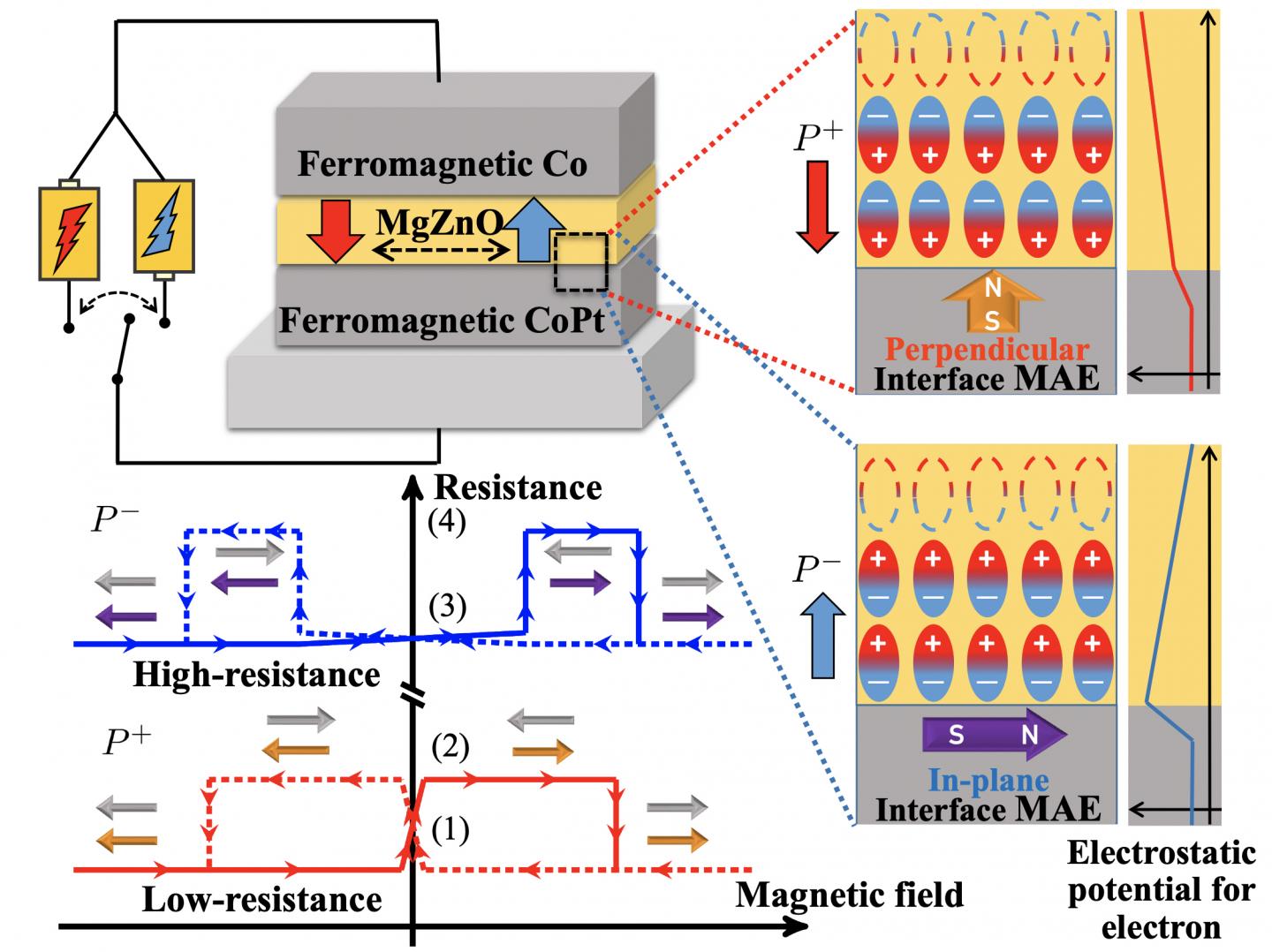Researchers from Kanazawa University use electrical polarization to control magnetic properties aiming for advanced memory applications

Credit: Kanazawa University
Kanazawa, Japan–The ability to control the magnetic properties of a material using electricity is important for the development of computer technology, particularly nonvolatile memory, which is memory that requires no constant electrical supply to maintain a set state. That is, electrical control of the magnetic states of a material may allow us to realize the attractive energy-efficient concept of nonvolatile magnetic memory that is switched between different states using electricity. Recently, Japanese researchers from Kanazawa University found that the magnetic properties of one metal layer could be controlled by applying electricity to an overlying metal oxide layer.
The research team investigated the change in the magnetic properties of a layer of cobalt-platinum alloy (CoPt) induced by the electrical polarization of an overlying zinc oxide (ZnO) layer. Computational simulations showed that switching the electrical polarization of the ZnO layer had a large effect on the chemical potential at the interface between ZnO and CoPt, which in turn led to a considerable change in the magnetic behavior of the CoPt layer. The change of the magnetic behavior of the CoPt layer was nonvolatile; i.e., the layer remained in the set state until the electrical polarization of the ZnO layer was changed.
“The large effect of the electrical polarization of ZnO on the magnetic properties of CoPt could be explained by the polarization of ZnO providing control over the interactions of the atomic orbitals of CoPt,” says author Masao Obata.
To confirm the promising results obtained from their simulations, the researchers fabricated a stacked structure called a tunnel junction containing Mg doped ZnO and CoPt layers. The magnetic properties and switching behavior of the tunnel junction were investigated. The results revealed that the tunnel junction showed substantially different magnetic behavior depending on the electrical polarization state of the ZnO layer, providing qualitative agreement between the simulation results and theoretical findings.
“The ZnO/CoPt system demonstrates that it is possible to achieve nonvolatile electrical control of the magnetic properties of materials,” explains co-author Tatsuki Oda. “Such a concept is important for the development of advanced energy-efficient nonvolatile magnetic memory.”
The nonvolatile control of the magnetic behavior of CoPt by the electrical polarization of ZnO represents an attractive concept to realize new nonvolatile memory applications to further advance information processing.
###
Media Contact
Tomoya Sato
[email protected]
81-762-645-076
Original Source
https:/
Related Journal Article
http://dx.





